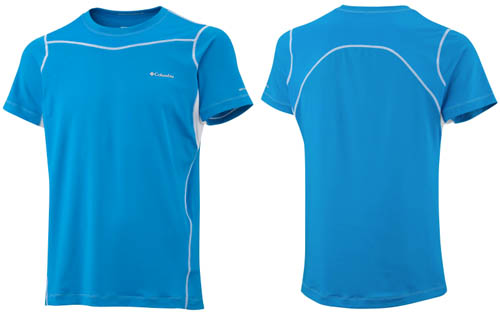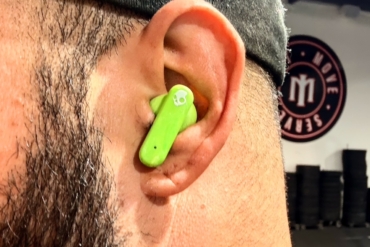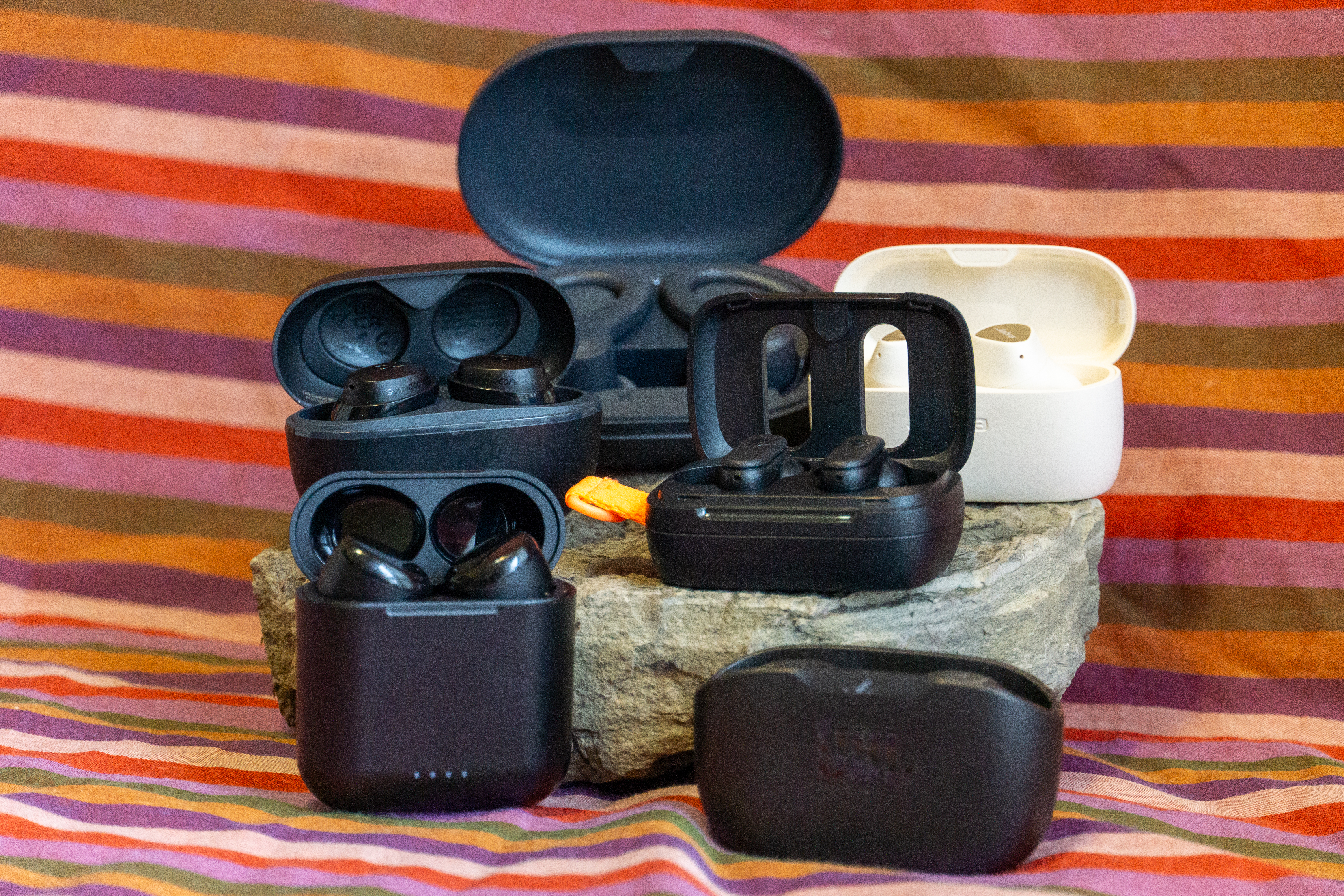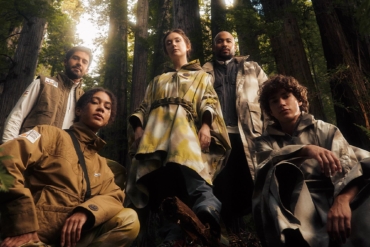Tight-fitting, electric blue, and fortified with a phase-change compound embedded in its fibers, the Omni-Freeze Ice Baselayer from Columbia Sportswear is the most interesting T-shirt I’ve worn in years. The shirt, which comes out in 2012, is made for sport activities in hot weather, where its fibers react to sweat and promote an endothermic reaction that issues a cooling effect.
As the company explains it, there are “tiny crystals” in the fabric that undergo a state change from a solid to a gel when wet. Your sweat triggers this reaction on a hot day. The state change causes the aforementioned endothermic reaction, which “sucks heat from the surrounding environment,” Columbia cites, to create a cooling effect on the skin.

I have been running in the magic T-shirt all summer. The tiny crystals seem to work. A few minutes into a workout, when sweat starts to soak through the shirt, I can feel the fabric cool on my skin.
Columbia won’t cite what the compound is — the company will only state it is “maize-based.” That’s right, corn! Whether the pixie dust comes from the kernels, stalk, silk or other plant part it won’t say. In its advertisements, Columbia will leave out the botanical references and call the technology “Omni-Freeze ICE.”
The T-shirt, one in a line of items Columbia will develop with Omni-Freeze ICE, will cost $55. It ships to stores in early 2012.
Beyond the corn dust, the shirt is made mainly of polyester, and it feels like a regular synthetic running top at first — it’s lightweight and comfortable to wear on a run. The fabric is stretchy, and the company touts the shirt as breathable and with “advanced evaporation” characteristics.

I did not notice any evaporative effect. In fact, once soaked with sweat — and subsequently cooled down as a thin sheen of fabric stuck on my skin — the shirt stayed soaked the whole run.
Further, the cooling effect only lasted a few minutes. As Columbia explains it, the crystals go through the state change and the endothermic reaction once and then settle into the new state — the shirt gets wet from sweat, the crystals change and feel cool, and then they go back to being unnoticeable or “normal” again. You need to let the shirt dry completely to trigger the cool-down reaction a second time.
In the end, the shirt’s cooling feature is noticeable, though it’s subtle and by no means a game-changer for running in heat. It afforded some additional comfort for summer runs, but I still got hot in this shirt when temps were 90 degrees and above. But as a neat innovation in the world of clothing made for heat, Columbia is onto something with this magic maize-based top.
—Stephen Regenold is founder and editor of www.gearjunkie.com. Connect with Regenold at Facebook.com/TheGearJunkie or on Twitter via @TheGearJunkie.
Related Content:
> “Stingrays and Pixie Dust: Columbia Sportswear 2012 Product Peek”
> “Haute Outdoors? Columbia Hires New York Fashion Designer”






